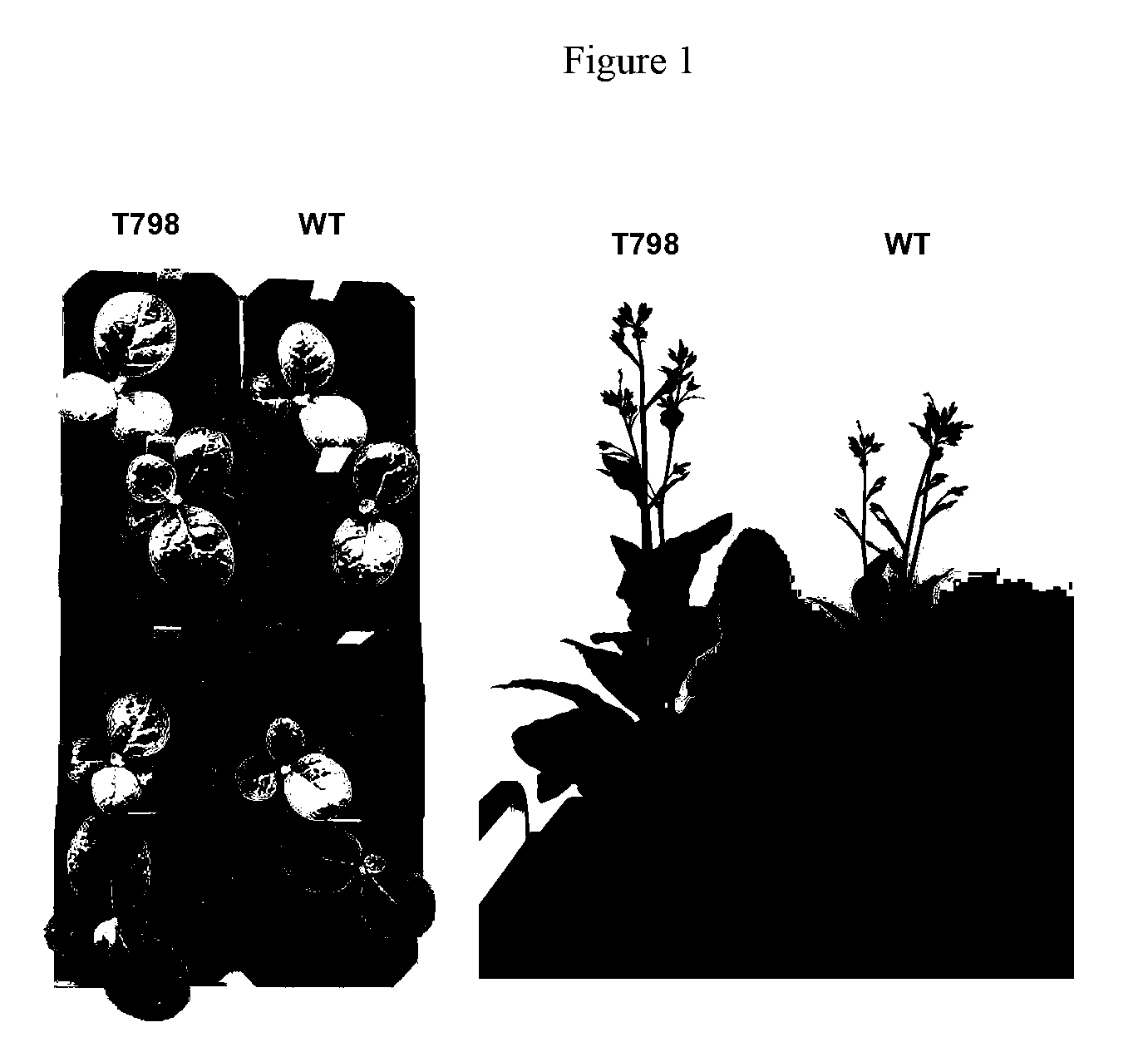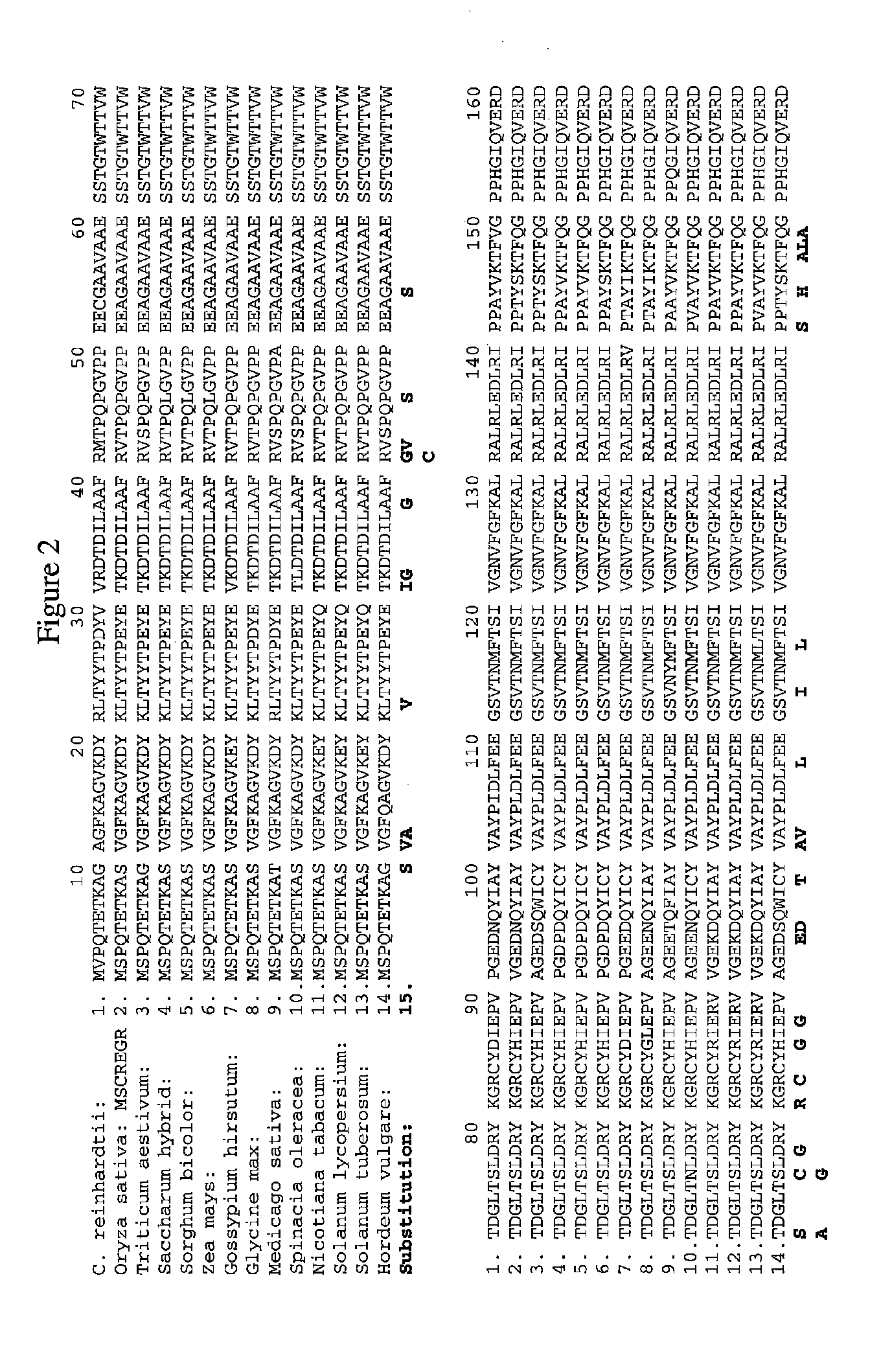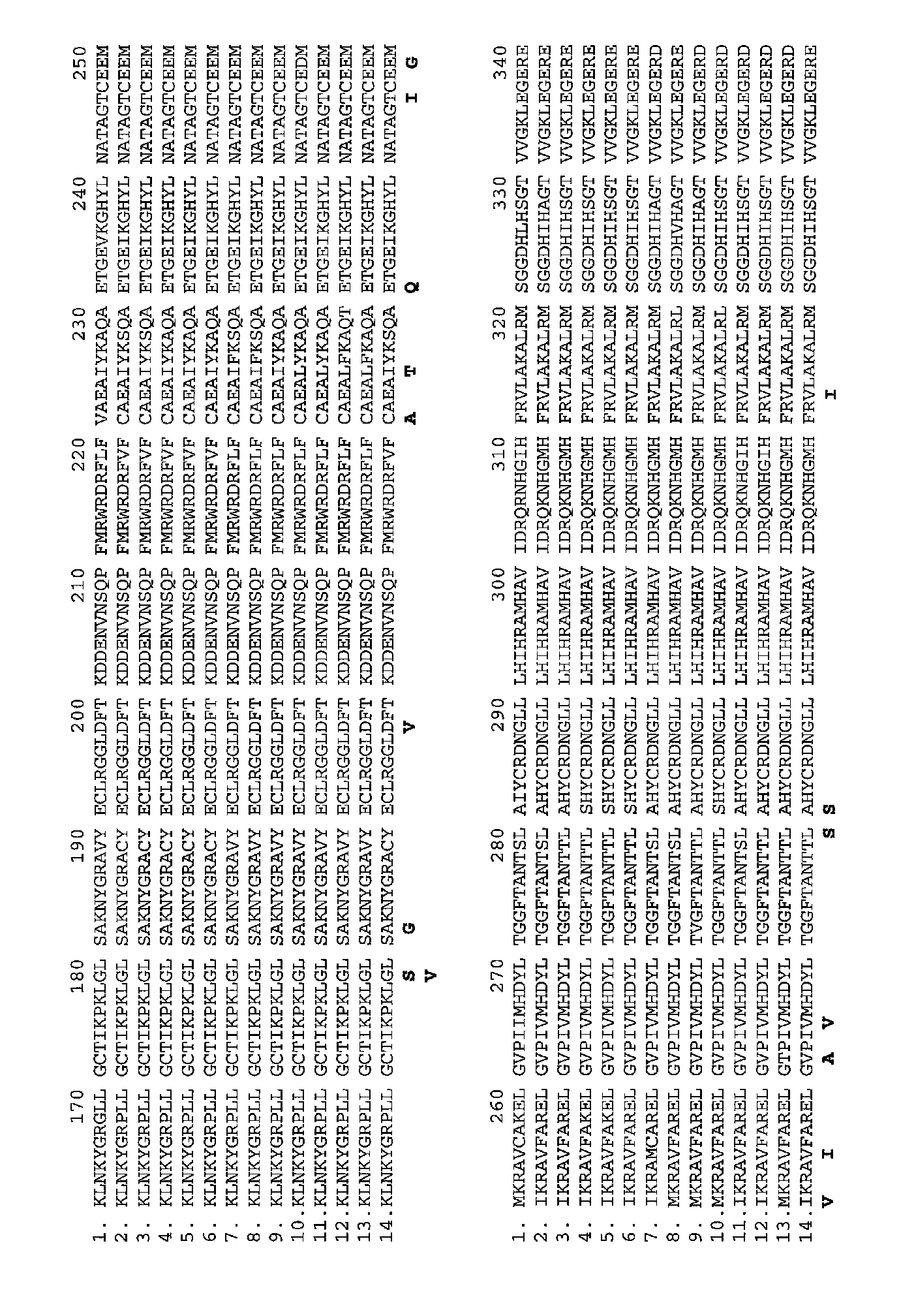Methods of identifying and creating rubisco large subunit variants with improved rubisco activity, compositions and methods of use thereof
a rubisco subunit and large subunit technology, applied in the field of gene activity and plant development modulation, can solve the problems of large optimization space, rubisco seems to be an inefficient catalyst, and the rate limitation of reaction catalyzed by rubisco, so as to increase the activity of rubisco and increase the plant productivity in the plan
- Summary
- Abstract
- Description
- Claims
- Application Information
AI Technical Summary
Benefits of technology
Problems solved by technology
Method used
Image
Examples
example 1
Host Generation
[0313]Chlamydomonas Rubisco LSU was knocked out by transforming a construct containing a bacterial aadA coding sequence flanked by 2.3 kb 5′ and 1 kb 3′ sequences of Chlamydomonas rbcL. The mutant strain was named MX3312. MX3312 has its entire rbcL coding sequence replaced by aadA gene through homologous recombination and antibiotic selection on spectinomycin. This strain can heterotrophically grow on acetate containing medium, but dies after withdrawal of acetate from the medium. The photoautotrophic growth of MX3312 can be easily restored by transforming the construct of Chlamydomonas wild type rbcL (Cr-rbcL) with both 5′ and 3′ flanking sequences.
example 2
Construction of rbcL Libraries
[0314]To shuffle Chlamydomonas LSU, Cr-rbcL coding region with 2.3 kb 5′ and 1 kb 3′ flanking sequences was cloned into the pBluescript plasmid. The libraries were constructed according to Stemmer (1994a) and Crameri et al (1998). Single gene shuffling and semi-synthetic shuffling (Ness et al, 2002), in which the oligos containing the nature-occurring diversity of Rubisco gene family were spiked into the Cr-rbcL fragments during assembly, were performed in the 1st round shuffling. The parental genes for the 2nd and 3rd rounds shuffling were selected from the previous round's hits. The library variants were transformed into the rbcL deletion mutant strain MX3312 by particle bombardment (PDS 1000-He Biolistic Delivery System—BioRad) for subsequent selection and screening.
example 3
1st-Tier: Functional Complementation
[0315]The 1st tier is based on functional complementation. As discussed above, MX3312 can grow on acetate containing medium but cannot on minimal medium. The photoautotrophic growth of MX3312 can only be restored by introducing a functional Rubisco LSU. After transforming shuffled Cr-rbcL variants into MX3312, only Rubisco LSU variants which are functional can be recovered as the photosynthesis-competent colonies obtained from selection on minimal medium. By this single selection step, all non-functional variants including those with deteriorated catalytic activity which could not support photoautotrophic growth in the library are eliminated. Table 1 shows amino acid substitutions in Rubisco large subunit that were found to generate functional Rubisco and support the photoautotrophic growth of MX3312.
PUM
| Property | Measurement | Unit |
|---|---|---|
| Temperature | aaaaa | aaaaa |
| Temperature | aaaaa | aaaaa |
| Fraction | aaaaa | aaaaa |
Abstract
Description
Claims
Application Information
 Login to View More
Login to View More - R&D
- Intellectual Property
- Life Sciences
- Materials
- Tech Scout
- Unparalleled Data Quality
- Higher Quality Content
- 60% Fewer Hallucinations
Browse by: Latest US Patents, China's latest patents, Technical Efficacy Thesaurus, Application Domain, Technology Topic, Popular Technical Reports.
© 2025 PatSnap. All rights reserved.Legal|Privacy policy|Modern Slavery Act Transparency Statement|Sitemap|About US| Contact US: help@patsnap.com



